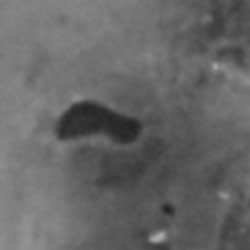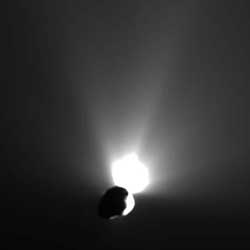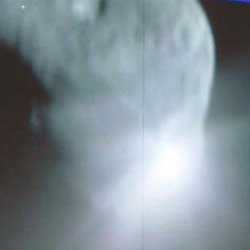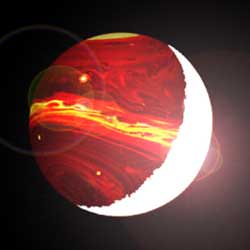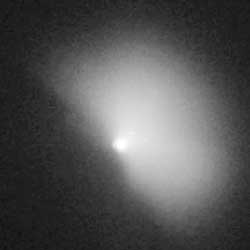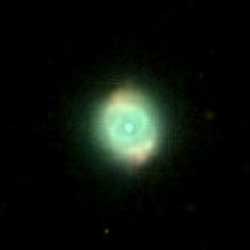
A magnified view of muscle fibres. Image credit: UM. Click to enlarge.
Experiments for NASA space missions have shown that small amounts of edible meat can be created in a lab. But the technology that could grow chicken nuggets without the chicken, on a large scale, may not be just a science fiction fantasy.
In a paper in the June 29 issue of Tissue Engineering, a team of scientists, including University of Maryland doctoral student Jason Matheny, propose two new techniques of tissue engineering that may one day lead to affordable production of in vitro – lab grown — meat for human consumption. It is the first peer-reviewed discussion of the prospects for industrial production of cultured meat.
“There would be a lot of benefits from cultured meat,” says Matheny, who studies agricultural economics and public health. “For one thing, you could control the nutrients. For example, most meats are high in the fatty acid Omega 6, which can cause high cholesterol and other health problems. With in vitro meat, you could replace that with Omega 3, which is a healthy fat.
“Cultured meat could also reduce the pollution that results from raising livestock, and you wouldn’t need the drugs that are used on animals raised for meat.”
Prime Without the Rib
The idea of culturing meat is to create an edible product that tastes like cuts of beef, poultry, pork, lamb or fish and has the nutrients and texture of meat.
Scientists know that a single muscle cell from a cow or chicken can be isolated and divided into thousands of new muscle cells. Experiments with fish tissue have created small amounts of in vitro meat in NASA experiments researching potential food products for long-term space travel, where storage is a problem.
“But that was a single experiment and was geared toward a special situation – space travel,” says Matheny. “We need a different approach for large scale production.”
Matheny’s team developed ideas for two techniques that have potential for large scale meat production. One is to grow the cells in large flat sheets on thin membranes. The sheets of meat would be grown and stretched, then removed from the membranes and stacked on top of one another to increase thickness.
The other method would be to grow the muscle cells on small three-dimensional beads that stretch with small changes in temperature. The mature cells could then be harvested and turned into a processed meat, like nuggets or hamburgers.
Treadmill Meat
To grow meat on a large scale, cells from several different kinds of tissue, including muscle and fat, would be needed to give the meat the texture to appeal to the human palate.
“The challenge is getting the texture right,” says Matheny. “We have to figure out how to ‘exercise’ the muscle cells. For the right texture, you have to stretch the tissue, like a live animal would.”
Where’s the Beef?
And, the authors agree, it might take work to convince consumers to eat cultured muscle meat, a product not yet associated with being produced artificially.
“On the other hand, cultured meat could appeal to people concerned about food safety, the environment, and animal welfare, and people who want to tailor food to their individual tastes,” says Matheny. The paper even suggests that meat makers may one day sit next to bread makers on the kitchen counter.
“The benefits could be enormous,” Matheny says. “The demand for meat is increasing world wide — China ‘s meat demand is doubling every ten years. Poultry consumption in India has doubled in the last five years.
“With a single cell, you could theoretically produce the world’s annual meat supply. And you could do it in a way that’s better for the environment and human health. In the long term, this is a very feasible idea.”
Matheny saw so many advantages in the idea that he joined several other scientists in starting a nonprofit, New Harvest, to advance the technology. One of these scientists, Henk Haagsman, Professor of Meat Science at Utrecht University, received a grant from the Dutch government to produce cultured meat, as part of a national initiative to reduce the environmental impact of food production.
Other authors of the paper are Pieter Edelman of Wageningen University , Netherlands ; Douglas McFarland, South Dakota State University ; and Vladimir Mironov, Medical University of South Carolina.
Original Source: UM News Release

